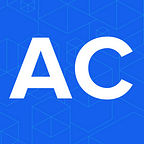Collateralized Stable Yield Credit
We have released our third iteration of Stable Credit. As we continue to build upon the protocol we have some interesting observations to document.
Aggregated Yield
Instead of continuous interest rates, the protocol collects fees on every deposit, borrow, or repay event. All these fees are taken in the Stable Credit currency. The net result is aggregated yield across all supplied pairs.
Trading fees
Since all collateral is automatically supplied to make the stable credit market, this inherently means that all collateral earns trading fees. Trading fees are collected over and above minting yield.
Interest free protocol loans
The economic flaw in iteration 1 assumed the AMM pools were in sync with the oracle. As these are two separate markets this allowed shift between these two values to be manipulated. Introduced in iteration 2 was the concept of interest free protocol loans. When collateral is provided the system mints an equivalent of Stable Credit for the collateral provider. This means the system equilibrium is 1:1. However, at this point, the system can’t make the Stable Credit market (required for peg, creating velocity, and increasing fees). To allow the system to create the market, it creates an interest free loan of Stable Credit equivalent to the required amount to make the market.
IL protection
The 2nd iteration introduced interest free protocol loans, in iteration 1, all Stable Credit was simply burned, this meant that depositors could not enjoy the upside of their tokens, instead would only receive the relevant peg value to their minted amount. With the concept of debt instead of simply 50:50 weights, this allows the protocol to burn only the debt, and provide the collateral provider with any profits. This includes profits from trading fees as well as token appreciation.
Automated Positive Sum Liquidations
This was the core design principal for integrating directly into native AMM’s, pegging the collateral to Stable Credit and then using the collateral + interest free loan as collateral for the AMM allows constant micro (positive sum additions) liquidations to occur (if required). Traditionally, as collateral value decreases in a system, external liquidators would repay the debt portion and be allowed to claim the collateral portion. With the cyclic AMM design, instead arbitrageurs add additional collateral and extract Stable Credit from the system (or simply trade for another system linked appreciating asset).
Summary
With conclusion of testing on the third iteration we will resubmit for a second audit and launch the official Stable Credit post final audit revision.
